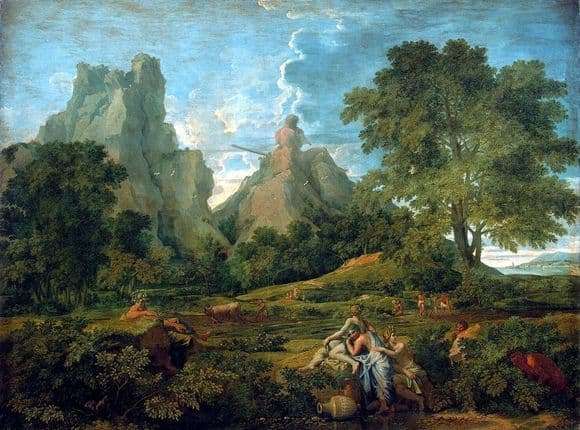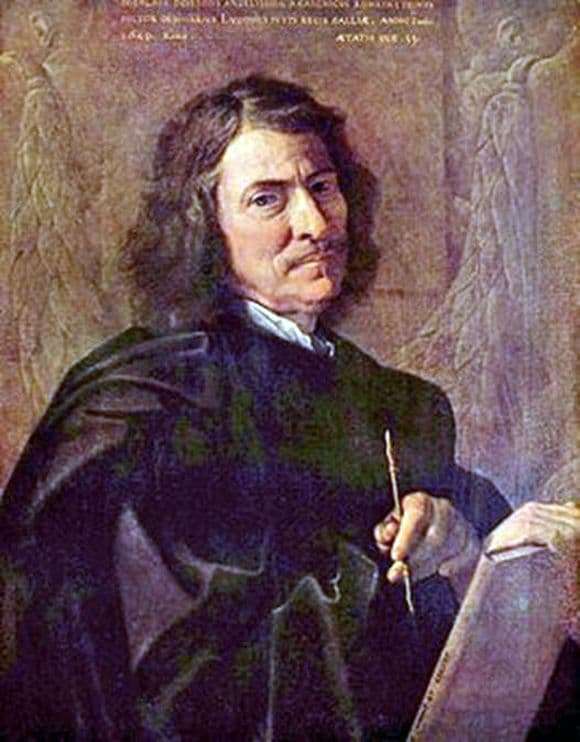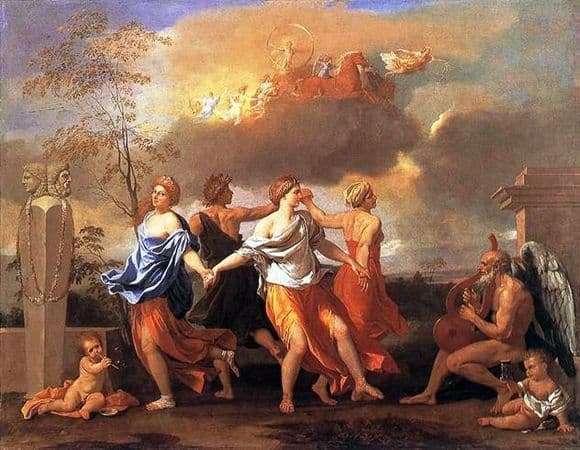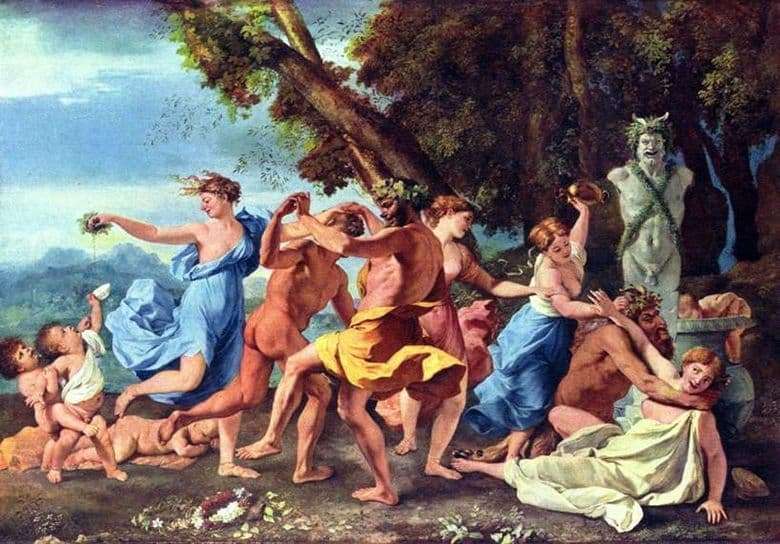
This painting was written in 1649.
Before us appears the landscape in its typical form. Previously, there was an unspoken rule according to which artists did not draw nature directly from nature. They did it in their workshop. The whole landscape was built according to certain rules. The accents of the three plans were created using color.
Nature was for the artist a wonderful world in which true beauty reigns. His paintings have a deep philosophical content. We feel how majestic and powerful nature. But at the same time it is inextricably linked with people.
We see the Cyclops Polyphemus. He sits on a cliff in the background. He loved Galatea greatly and longed for her very much. This unrequited love for the beautiful nymph he constantly invested in his songs, which he often played on the flute.
Polyphem ceases to be a terrible monster, frightening everyone around, and becomes the favorite of the nymphs. They often come specially to enjoy his great music. It seems that all nature is frozen and also enjoys the gentlest melodies of this tamed giant. Through the gap you can see the calm sea. This light miraculously flows on all creation.
Poussin animates nature. She is alive. Unity is achieved through great love and great music. This feeling tamed even such a ferocious monster who was a cyclops.
We look at the picture and feel the peace of appeasement. Green and blue colors prevail. Contrasts are evenly distributed. But, as you know, the story of Polyphemus and Galatea ended tragically. It threatens such a majestic symphony of nature itself. She reigned just for a moment.
As soon as this thought arises, you begin to feel a dissonance between what you see and what you know. Most likely, Poussin thought it over and provided for it in advance.
Description of the painting by Nicolas Poussin “Landscape with Polyphemus”







